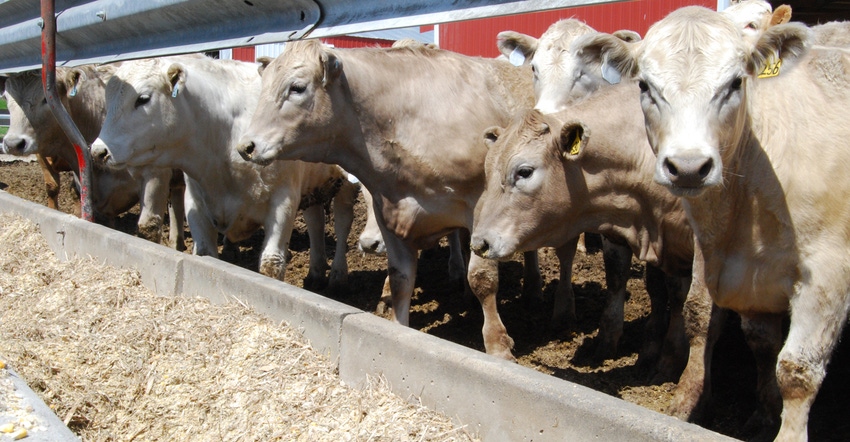February 8, 2017

Fed cattle prices are off to a good start in 2017. USDA Agricultural Marketing Service report LM_CT167 shows Iowa-Minnesota prices rose to $121.66 per cwt during the week ending Jan. 22.
That was the highest weekly average fed cattle price since the first week of July 2016. It also represents a 27% increase since mid-October, when 2016 prices bottomed at $95.93 per cwt.
Concurrently, the February, April and June 2017 live cattle futures contracts gained over $18 per cwt, or 19%, on average.
Iowa feedlots moved cattle aggressively in 2016, especially from April through the end of the year. In those months, feedlot marketings exceeded placements by 17%, resulting in net feedlot outflow of 128,000 head, thus leading to the smaller year-over-year feedlot inventories at the beginning of 2017.
Jan. 1 feedlot inventories were 82% of last year for feedlots with less than a 1,000-head capacity, 97% of last year for feedlots with 1,000-plus head capacity, and 89% of last year overall. Smaller inventories set up a tighter-than-expected first-half 2017 finished cattle supply.
First-half profit prospects
The main implication of this is that expected cattle feeding returns have strengthened notably. Estimates of closeout returns offered in ISU’s Estimated Livestock Return Series (www2.econ.iastate.edu/estimated-returns) indicate the return in December for finishing yearling steers was a $3.86 profit per head (see table). This is a welcome development as sale prices have not covered cost of production, as calculated by Iowa State University, in 20 of the last 24 months. Plus, the picture continues to improve.
Recognize that the ISU series mimics a cash market situation without price risk management. In using a cash strategy, a cattle feeder paid cash for 750-pound feeder steers based on what the market was in July, paid the cash price for corn and other feedstuffs over the feeding period, and received the cash market price for 1,300-pound fed cattle in December. Anyone who locked in corn, feeder cattle or fed cattle prices would have a different result, maybe better or worse.
For the first six months of 2017, the average projected profit is $92.64 per head. The best month currently projected is April 2017 steer closeouts (profit of $210.84 per head), where April fed cattle prices on Jan. 27 are estimated at $119.65 per cwt, which is substantially higher than the $99.77 to $112.56 per cwt estimated for the remainder of 2017 scheduled closeouts.
Compared to a year ago, lower feeder cattle prices and feedstuff costs have significantly decreased estimated breakeven sales prices for coming months.
Using all economic costs (including the cost of the feeder animal and interest), for a typical Iowa commercial feeding situation, breakeven sales prices for steers placed into a feedlot during October, November and December 2016 (entering the feedlot at about 750 pounds) were calculated by Iowa State University to be in the range of $103 to $109 per cwt. If realized, those would be the lowest since the first quarter of 2011.
Second-half losses likely
Unfortunately, losses are projected for July through December 2017 closeouts, averaging a negative $70.98 per head.
However, the margin for error given variation across operations in cost of gain is easily a $50-per-head movement either way, which makes the situation a potential breakeven or better for some operations. Producers should carefully compare their own costs and prices with those reported here to make their own profit projections.
Many feedlots certainly engage in price risk management through forward contracting, futures, options, etc. However, few can fully offset all price risks as it is rare that profitable margins can be locked-in at or near placement.
When profitable margins present themselves, careful consideration should be paid to locking in those profits. Remember the goal of price risk management: Protecting yourself against a fed cattle price decline, in this case, is to minimize risk by limiting losses and increasing the probability of profit.
Schulz is the Iowa State University Extension livestock economist. Contact him at [email protected].
About the Author(s)
You May Also Like






